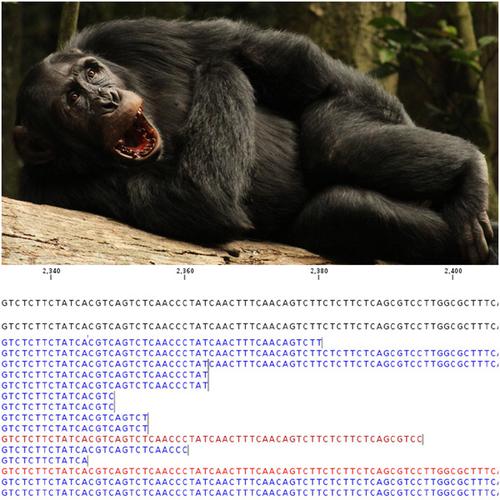当前位置:
X-MOL 学术
›
Am. J. Primatol.
›
论文详情
Our official English website, www.x-mol.net, welcomes your
feedback! (Note: you will need to create a separate account there.)
Viruses associated with ill health in wild chimpanzees
American Journal of Primatology ( IF 2.0 ) Pub Date : 2022-01-11 , DOI: 10.1002/ajp.23358 Jacob D Negrey 1, 2 , John C Mitani 3 , Richard W Wrangham 4 , Emily Otali 5 , Rachna B Reddy 4 , Tressa E Pappas 6 , Kristine A Grindle 6 , James E Gern 6 , Zarin P Machanda 7 , Martin N Muller 8 , Kevin E Langergraber 9, 10 , Melissa Emery Thompson 8 , Tony L Goldberg 1
American Journal of Primatology ( IF 2.0 ) Pub Date : 2022-01-11 , DOI: 10.1002/ajp.23358 Jacob D Negrey 1, 2 , John C Mitani 3 , Richard W Wrangham 4 , Emily Otali 5 , Rachna B Reddy 4 , Tressa E Pappas 6 , Kristine A Grindle 6 , James E Gern 6 , Zarin P Machanda 7 , Martin N Muller 8 , Kevin E Langergraber 9, 10 , Melissa Emery Thompson 8 , Tony L Goldberg 1
Affiliation

|
Viral infection is a major cause of ill health in wild chimpanzees (Pan troglodytes), but most evidence to date has come from conspicuous disease outbreaks with high morbidity and mortality. To examine the relationship between viral infection and ill health during periods not associated with disease outbreaks, we conducted a longitudinal study of wild eastern chimpanzees (P. t. schweinfurthii) in the Kanyawara and Ngogo communities of Kibale National Park, Uganda. We collected standardized, observational health data for 4 years and then used metagenomics to characterize gastrointestinal viromes (i.e., all viruses recovered from fecal samples) in individual chimpanzees before and during episodes of clinical disease. We restricted our analyses to viruses thought to infect mammals or primarily associated with mammals, discarding viruses associated with nonmammalian hosts. We found 18 viruses (nine of which were previously identified in this population) from at least five viral families. Viral richness (number of viruses per sample) did not vary by health status. By contrast, total viral load (normalized proportion of sequences mapping to viruses) was significantly higher in ill individuals compared with healthy individuals. Furthermore, when ill, Kanyawara chimpanzees exhibited higher viral loads than Ngogo chimpanzees, and males, but not females, exhibited higher infection rates with certain viruses and higher total viral loads as they aged. Post-hoc analyses, including the use of a machine-learning classification method, indicated that one virus, salivirus (Picornaviridae), was the main contributor to health-related and community-level variation in viral loads. Another virus, chimpanzee stool-associated virus (chisavirus; unclassified Picornavirales), was associated with ill health at Ngogo but not at Kanyawara. Chisavirus, chimpanzee adenovirus (Adenoviridae), and bufavirus (Parvoviridae) were also associated with increased age in males. Associations with sex and age are consistent with the hypothesis that nonlethal viral infections cumulatively reflect or contribute to senescence in long-lived species such as chimpanzees.
中文翻译:

与野生黑猩猩健康状况不佳相关的病毒
病毒感染是野生黑猩猩( Pan troglodytes )健康状况不佳的一个主要原因,但迄今为止的大多数证据都来自发病率和死亡率很高的明显疾病暴发。为了研究与疾病爆发无关的时期病毒感染与健康状况不佳之间的关系,我们对乌干达基巴莱国家公园 Kanyawara 和 Ngogo 社区的野生东部黑猩猩 (P. t. schweinfurthii )进行了纵向研究。我们收集了 4 年的标准化、观察性健康数据,然后使用宏基因组学来表征个体黑猩猩在临床疾病发作之前和期间的胃肠道病毒组(即从粪便样本中回收的所有病毒)。我们的分析仅限于被认为感染哺乳动物或主要与哺乳动物相关的病毒,丢弃与非哺乳动物宿主相关的病毒。我们发现了来自至少 5 个病毒家族的 18 种病毒(其中 9 种是之前在该人群中发现的)。病毒丰富度(每个样本的病毒数量)不会因健康状况而变化。相比之下,与健康个体相比,患病个体的总病毒载量(映射到病毒的序列的标准化比例)显着更高。此外,在生病时,Kanyawara 黑猩猩表现出比 Ngogo 黑猩猩更高的病毒载量,并且雄性(而非雌性)表现出更高的某些病毒感染率,并且随着年龄的增长,总病毒载量也更高。事后分析(包括使用机器学习分类方法)表明,一种病毒,即唾液病毒(小核糖核酸病毒科),是造成健康相关和社区层面病毒载量变化的主要因素。另一种病毒,黑猩猩粪便相关病毒(chisavirus;未分类的小核糖核酸病毒目),与 Ngogo 的健康状况不佳有关,但在 Kanyawara 则不然。Chisavirus、黑猩猩腺病毒(腺病毒科)和蟾蜍病毒(细小病毒科)也与男性年龄增加有关。与性别和年龄的关联与非致命病毒感染累积反映或导致黑猩猩等长寿物种衰老的假设是一致的。
更新日期:2022-02-10
中文翻译:

与野生黑猩猩健康状况不佳相关的病毒
病毒感染是野生黑猩猩( Pan troglodytes )健康状况不佳的一个主要原因,但迄今为止的大多数证据都来自发病率和死亡率很高的明显疾病暴发。为了研究与疾病爆发无关的时期病毒感染与健康状况不佳之间的关系,我们对乌干达基巴莱国家公园 Kanyawara 和 Ngogo 社区的野生东部黑猩猩 (P. t. schweinfurthii )进行了纵向研究。我们收集了 4 年的标准化、观察性健康数据,然后使用宏基因组学来表征个体黑猩猩在临床疾病发作之前和期间的胃肠道病毒组(即从粪便样本中回收的所有病毒)。我们的分析仅限于被认为感染哺乳动物或主要与哺乳动物相关的病毒,丢弃与非哺乳动物宿主相关的病毒。我们发现了来自至少 5 个病毒家族的 18 种病毒(其中 9 种是之前在该人群中发现的)。病毒丰富度(每个样本的病毒数量)不会因健康状况而变化。相比之下,与健康个体相比,患病个体的总病毒载量(映射到病毒的序列的标准化比例)显着更高。此外,在生病时,Kanyawara 黑猩猩表现出比 Ngogo 黑猩猩更高的病毒载量,并且雄性(而非雌性)表现出更高的某些病毒感染率,并且随着年龄的增长,总病毒载量也更高。事后分析(包括使用机器学习分类方法)表明,一种病毒,即唾液病毒(小核糖核酸病毒科),是造成健康相关和社区层面病毒载量变化的主要因素。另一种病毒,黑猩猩粪便相关病毒(chisavirus;未分类的小核糖核酸病毒目),与 Ngogo 的健康状况不佳有关,但在 Kanyawara 则不然。Chisavirus、黑猩猩腺病毒(腺病毒科)和蟾蜍病毒(细小病毒科)也与男性年龄增加有关。与性别和年龄的关联与非致命病毒感染累积反映或导致黑猩猩等长寿物种衰老的假设是一致的。











































 京公网安备 11010802027423号
京公网安备 11010802027423号